Courtesy of SKF Maintenance Products
|
| Detect
hot spots before they cause trouble. |
| |
| Since the dawn of the industrial age, temperature has been
used to give an indication of machine condition. Technicians know that
abnormal temperatures often indicate a potential problem. Depending on the
situation, sometimes just feeling the machine with the back of your hand can
help you determine if the temperature is within acceptable limits; of course
this method has severe safety limitations especially with rotating machinery
and electrical equipment! |
| |
| To obtain a more quantifiable indication of temperature,
direct contact thermometers are often used; a safer method than using the
back of your hand, but with some similar safety concerns. Infrared
thermometers are often used for hazardous and difficult to access
applications. |
| |
| However, infrared thermometers measure the average temperature
of an area and, for accurate measurements, the user often has to be
close to the application. Thermography allows you to visualize heat. The
application’s infrared radiation is converted by a thermal camera to a visual
image. |
| |
| The different temperatures are indicated as different colors
or shades of grey. Thermal cameras allow temperature comparisons over a large
area, allowing potentially troublesome hot spots to be found quickly. If cost
of the thermal camera is offset against savings in reduced downtime and
maintenance costs, generally a short payback period is realized. |
| |
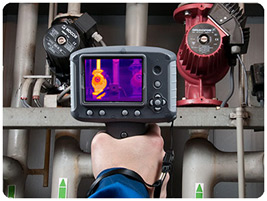 |
| Thermal cameras allow hot spots to be quickly and easily
visualized. |
| |
| Possible benefits of thermography: |
|
- A proactive, non-contact and non-invasive inspection
technique, which is often well suited as part of a predictive maintenance program
- An easier, faster and safer method of early fault condition
detection
- Inspection, over time, of equipment under same running
conditions, allowing thermal anomalies to be easily detected
- Inspection of running equipment under full load, minimizing
production interference
- Inspection of difficult to access live electrical equipment
- Reduction of production losses due to unplanned downtime,
thus increasing productivity and profitability
- Reduction of time necessary for planned shutdown
- Reduction of maintenance and repair costs
- Increased equipment lifetime and mean time between failures
(MTBF)
- Increased availability and reliability of plant
|
|
Thermography
examples: |
Mechanical equipment |
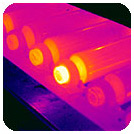 |
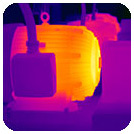 |
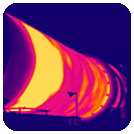 |
| Overheating conveyor bearing |
Overheating motor |
Damaged refractory lining |
Electrical equipment |
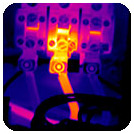 |
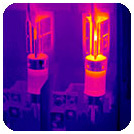 |
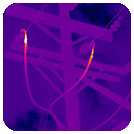 |
| Loss cable connection |
Faulty fuse connection |
Distribution line faults |
Buildings |
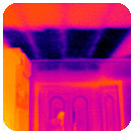 |
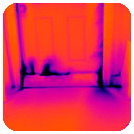 |
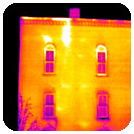 |
| Missing insulation |
Cold air leaks |
Air exfiltration |
|
| Note: pictures are for illustration purposes only |